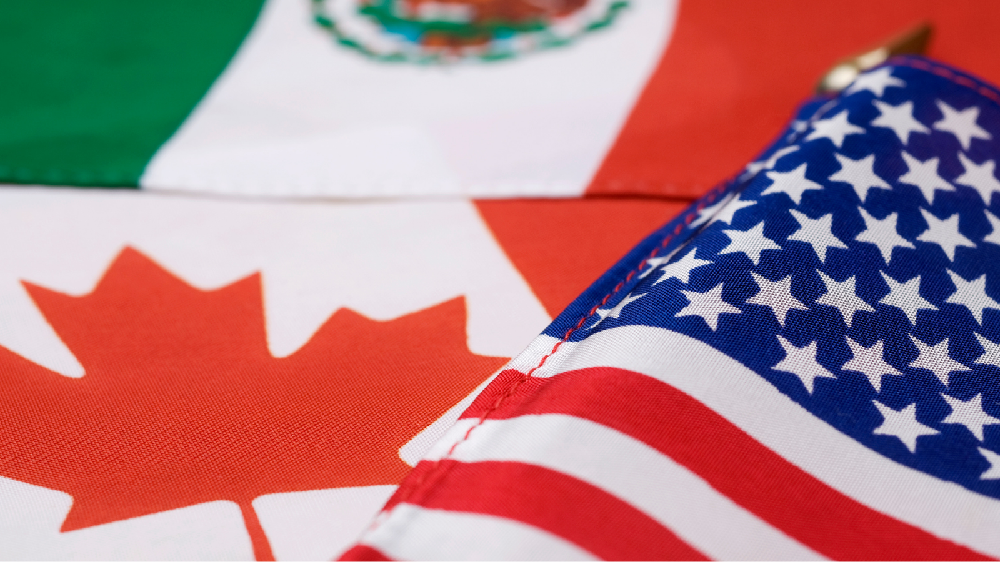
Did you have a computer in your house 25 years ago?
Odds are, the answer to that question is no. In the years since, however, computers have become omnipresent, and our phones are rarely further than a couple of feet away from us. With so many devices connected to the internet, buying and selling goods and services online has transformed from a revolutionary new idea to an unremarkable daily occurrence.
The problem is that NAFTA, the largest regional multilateral free trade agreement, originally negotiated 25 years ago, hasn’t been updated to reflect these modern realities. So what should be done about that, and how will it affect the lives of international trade professionals and consumers?
Why is it so important to take NAFTA into the 21st century?
On November 29, Canada 2020 hosted the NAFTA Goes Digital seminar to discuss these important questions and provide some answers.
The seminar was moderated by Heather Scoffield, Ottawa Bureau Chief for the Canadian Press.
The panelists were:
- Peter Clark, President of Grey, Clark, Shih and Associates and experienced Canadian trade advisor and commentator
- Laura Dawson, Director of the Wilson Center’s Canada Institute in Washington, DC
- Ari Giovenco, Director of Trade and International Policy for the Internet Association in Washington, DC
One of the earliest questions addressed why this digital chapter will be important for so many businesses.
“There’s been a prevailing idea that we can put a bubble around a national economy for goods, to control what goes in or out, and provide incentives or affect prices in other ways,” Dawson argued. “But now, we have a totally different digital economy without that bubble. Until this chapter is completed, we’re trying to apply old rules to a new situation that doesn’t fit them.”
Giovenco then explained that this chapter will affect any business using e-commerce that allows sales beyond domestic borders, whether they’re intentionally going after international customers or not.
“The internet is a borderless medium, so companies can go international without ever intending to do so. Since this is the case, how do you know things are going where they need and that people have the access they want? What are the rules about advertising on social media, monitoring and controlling the flow of data, copyright legislation, or customs and tariffs that can be added to products purchased through e-commerce?”
Dawson explained that most digital issues discussed in the NAFTA talks fall under one of four categories: freedom to move data across borders and prohibiting data localization, technology service provider freedoms, protecting IP (copyright, source codes), and customs facilitation and digital supply chains.
When could we start to see changes come into effect?
The prevailing consensus among the group of experts was that most of the pressing digital issues had already been addressed during the TPP negotiations. While that agreement was never put into effect, the decisions were easily transferable from the original TPP text, with small modifications to reflect the specific NATFA context as well as changes in the digital realm since those negotiations took place in 2012.
“Many of the negotiators on the digital chapter of NAFTA are the same people who had negotiated these issues in the TPP, and can essentially continue the same debate,” explained Giovenco. “There’s a lot of goodwill because everyone realizes how many companies are affected.”
Clark added that liability issues for service providers is the only major issue still without resolution, and that there should be an agreement in the near future.
Dawson countered that there are so many potential liability issues to tackle, from legal to financial and others, which may still prove a challenge for negotiators.
Despite the fact that negotiators of the digital chapter are aligned on most issues, its place within the larger NAFTA framework may delay its implementation. There are also certain topics such as service exports and finances, that need to be updated before aspects of the digital chapter can be finalized.
Who benefits most, and what may change?
One important change that may be coming, according to the panelists, is an increase to Canada’s de minimis threshold, or the value of goods Canadians can bring back into the country without paying duties. While the U.S. de minimis is set at $800, Canada’s is just $20, one of the lowest in the industrialized world.
The U.S. has advocated for Canada to increase their de minimis to at least $200, and studies have shown that Canada currently spends more to enforce this regulation than it reaps in duties.
“Canada will not want to be forced by the U.S. into giving too much,” Dawson explained. “Along with dairy access, de minimis is one area where Canada has not moved so far, but has room to do so.”
Clark agreed, and predicted it would move to somewhere between $200-300 by the end of negotiations. This would facilitate an increase in duty-free online shopping for Canadians from American websites, a popular demand from consumers across the country.
Giovenco offered that finalizing the digital chapter is crucial for many companies and would serve to foster further innovation and technological development.
“About 425,000 jobs and billions of dollars’ worth of business are affected by laws governing safe harbours for IP and copyright. Canada and the U.S. have different laws governing these issues, while Mexico has very few in place, so it’s essential to unify these laws in order to drive innovation and open the three markets to companies.”
While the U.S. or other parties may prove to be short-term winners, there was unanimous agreement that this chapter would be a win for everyone in the long-term, especially service providers and exporters in Canada, the U.S. and Mexico.
One final lingering concern is the way that major global corporations like Google or Netflix may or may not be regulated. Giovenco was most concerned with opening access, while Dawson focused on how to protect user data or prevent such companies from erasing Canadian culture.
It’s safe to say that NAFTA’s digital chapter will have a major impact on North American trade. By enacting a framework that aligns with the 21st century realities of digital trade, and deals with major issues like liability, digital privacy and IP protection, companies will have a clear path to digital expansion and expanding their businesses across the NAFTA region.







disqus comments